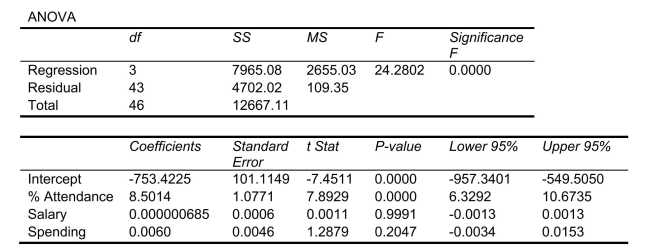True/False
SCENARIO 18-8 The superintendent of a school district wanted to predict the percentage of students passing a sixth-grade proficiency test.She obtained the data on percentage of students passing the proficiency test (% Passing), daily mean of the percentage of students attending class (% Attendance), mean teacher salary in dollars (Salaries), and instructional spending per pupil in dollars (Spending)of 47 schools in the state. Following is the multiple regression output with  as the dependent variable,
as the dependent variable, 


-Referring to Scenario 18-8, the null hypothesis should be rejected at a 5% level of significance when testing whether there is a significant relationship between percentage of students passing the proficiency test and the entire set of explanatory variables.
Correct Answer:

Verified
Correct Answer:
Verified
Q21: SCENARIO 18-2<br>One of the most common questions
Q131: SCENARIO 18-9<br>What are the factors that determine
Q134: SCENARIO 18-3<br>A financial analyst wanted to examine
Q175: SCENARIO 18-3 A financial analyst wanted to
Q178: SCENARIO 18-8 The superintendent of a school
Q179: SCENARIO 18-3 A financial analyst wanted to
Q180: SCENARIO 18-10 Given below are results from
Q209: SCENARIO 18-9<br>What are the factors that determine
Q216: SCENARIO 18-12<br>The marketing manager for a nationally
Q244: The weight of a randomly selected cookie